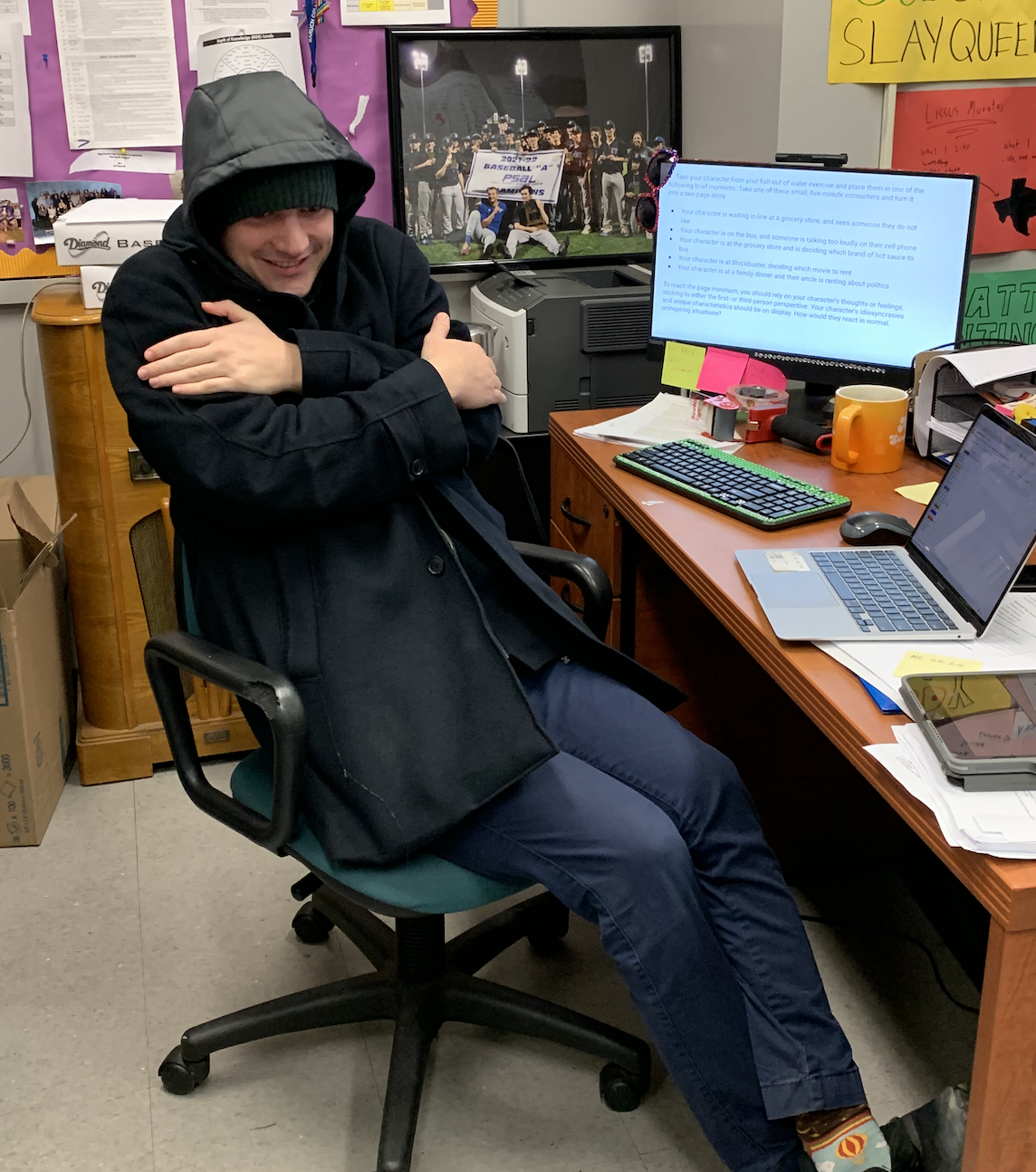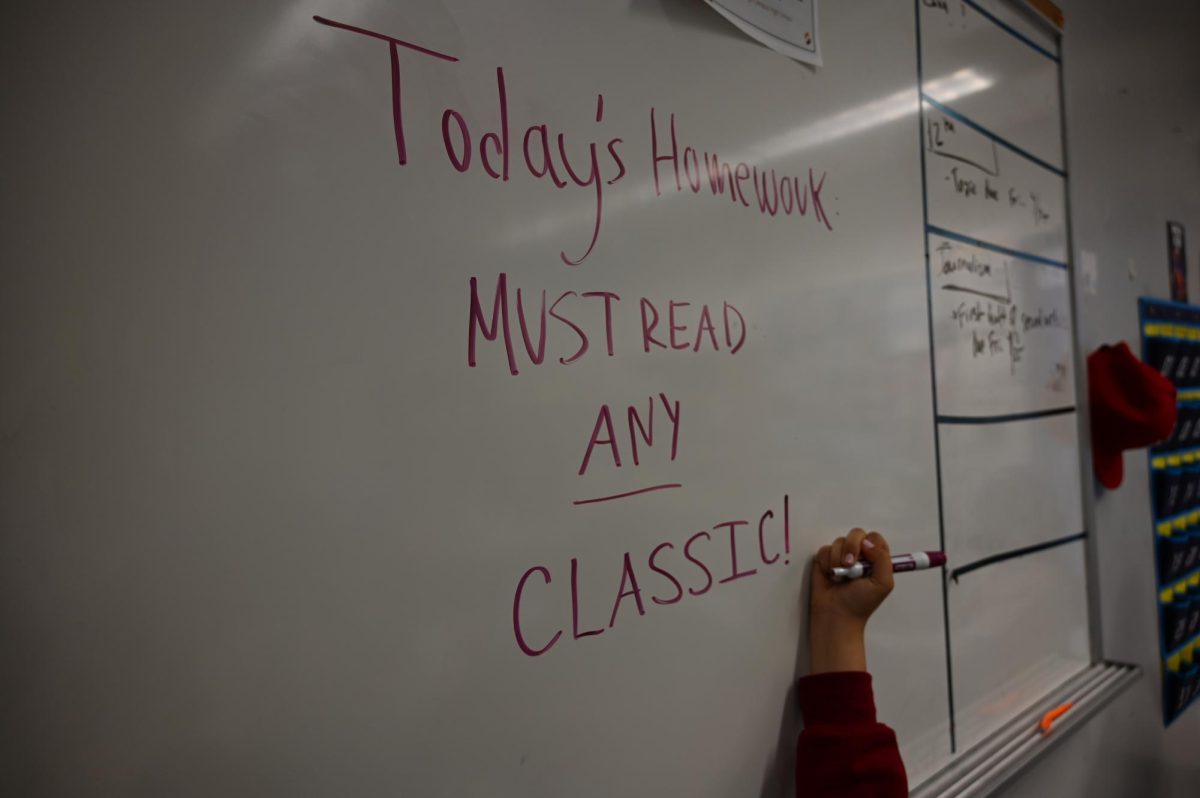Baruch and The Three Bears: Too Hot, Too Cold, Never Just Right
March 8, 2023
It’s no secret Baruch possesses a strange climate; some rooms prompt students to peel off any layers they can to combat the suffocating heat of the classrooms, while others are bundling up long after shutting every window. While it is debatable as to why Baruch’s school building heats and cools in the way it does, it is definitely a conversation starter among students and faculty alike.
In speaking with Baruch teachers and students, it is clear that Baruch’s school building has inconsistent waves of heat and frigidity.
John Jacobs, in classroom 213, has one of the hottest classrooms in the school. Exasperated, he said his classroom is “unbearable, like the Sahara,” characterized by its dry heat. “It fluctuates within its hotness… some days [are] worse than others, some days it’s not so bad… but it’s never cold. It’s by no means comfortable.”

His classroom only has one window that opens to a maximum of 4 inches, and whoever sits next to it is lucky to cool off—or even dare say that they feel cold.
However, climbing the stairs up to classrooms 410 and 517, chilliness is not so rare in Aaron Sparrow and Rita Ross’ classrooms. When asked whether their classrooms can be described as hot or cold, their frustrations could be chalked up to one word: “yes”. Both teachers report that the temperatures in their classrooms shift day-by-day, and even hourly.

And, with these unpredictable shifts in classroom temperatures, dressing for school each day seems nearly impossible.
Ross describes trying to dress for school as “Murphy’s Law”, where she dresses in anticipation of one temperature, and it is inevitably bound to be another. Meanwhile, Sparrow finds that it is difficult for his wardrobe to properly accommodate the chilly winter air on his daily commute, all while simultaneously preparing for the potential summer heat within his classroom.

To remedy this, all teachers have found a single, reliable solution: layering. Sparrow keeps a sweatshirt at school at all times, further supported as Jacobs describes himself as a “big ‘clothes at school’ guy.” He keeps an extra t-shirt and sweatshirt in his classroom at all times, given that sweating may prompt a costume change.
Almost anyone can agree that their focusing skills are challenged in environments where all they feel pit stains seeping through their t-shirts, or how much their teeth chatter. And, not only do the three teachers feel the temperature’s strain on their own teaching, but on the students’ learning as well.
When it gets really hot, Jacobs said it becomes “too much for some students”, where water breaks and a moment outside of the classroom are frequent. “Breaks are a fine part of education,” he said. However, he finds this interferes most with his teaching when students take advantage of these breaks, leaving the classroom for up to 20 minutes at a time.
Coming from the opposite side of the spectrum, where no water break or step outside of the classroom can relieve the chilliness that the fifth floor is subject to, Ross empathizes with the students who feel unable to focus due to the school’s varying temperatures.
“You shouldn’t have to go to school with your coat on,” she said.
Despite the fact these students and teachers can account for Baruch’s odd climate, none of the interviewees can theorize its cause.
Laughing, Jacobs referenced the “Twilight Zone”; heat is supposed to rise, and yet, his classroom on the second floor is consistently warmer than those on the fourth and fifth floors. Meanwhile, with 410 and 517 being two of the largest classrooms in the whole school building, it is understandable that it may take longer periods of time for the rooms to heat up and cool down.
Additionally, Sparrow highlighted the fact Baruch is housed in an older office building, possibly with an outdated heating and cooling system that can only be corrected by costly repairs.
As quick as some are to blame custodial, this issue is not unique to Baruch’s building, either. Teachers and students from other NYC schools report that their schools’ buildings have unpredictable and uncomfortable temperatures as well.
Currently, there are yet to be any details that can explain the building’s cooling and heating patterns. So, for the time being, students may be inclined to brush the dust off of the lockers that some have never even touched—perhaps, even considering leaving an extra shirt or two in there, too.











